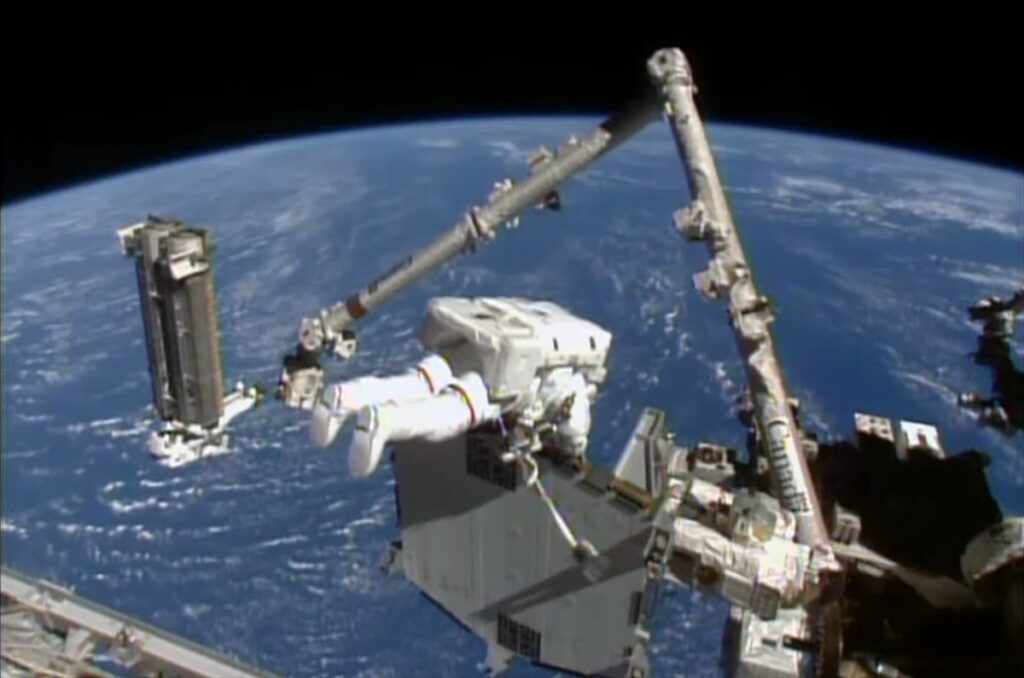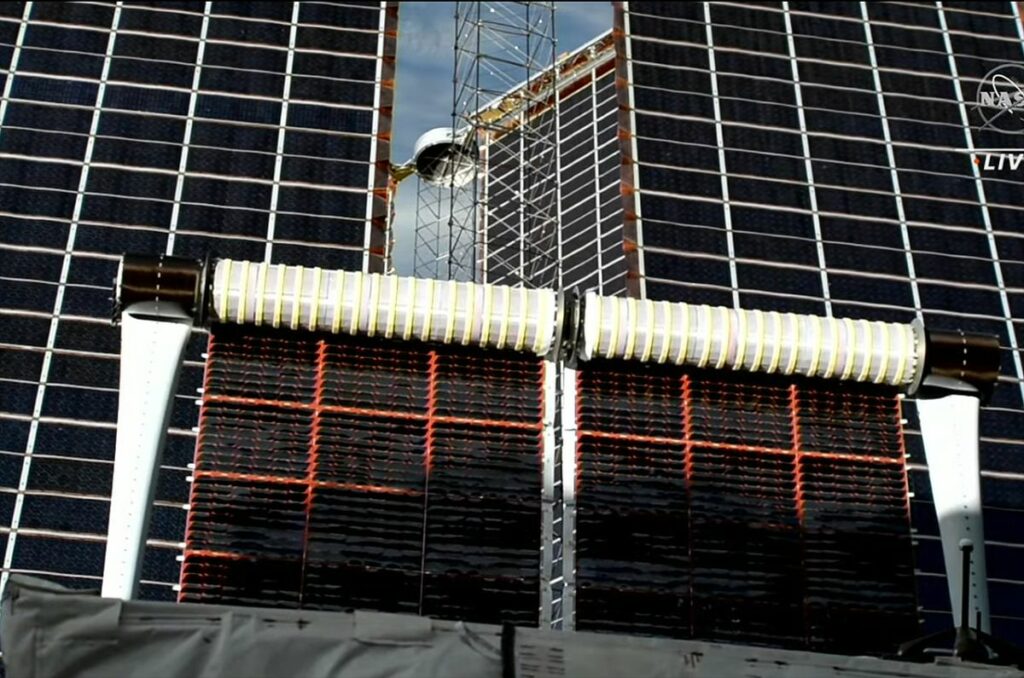Astronauts Frank Rubio and Josh Casada were able to perform the spacewalk that was delayed due to the threat from Russian space debris. They installed a solar panel that will expand the station’s energy capabilities.

Astronauts performed a spacewalk
On Thursday, December 21, astronauts Frank Rubio and Josh Casada made a spacewalk from the International Space Station. It was scheduled for Wednesday, but then it had to be canceled due to the threat of a collision with Russian space debris.
The purpose of the operation was to install a new iROSA solar panel. It was brought by the CRS-26 Dragon cargo spacecraft at the end of November. Rubio and Cassady were assisted in this operation by Nicole Mann, who operated Canadarm2 robotic manipulator arm, and Koiti Wakata, who coordinated its actions with astronauts from outside the station.
The course of the operation
The work began with Kasada attaching a footrest to the Canadarm2 and positioning himself on the manipulator. It was he who managed the deployment of iROSA from its initial position to the working one. At that time, Rubio was uncoiling the power cable that will transmit electricity from the panel to the station.
Next, the astronauts detached the panel from the platform on which it was launched and began deployment. It had to be done carefully, because the structure has a mass of 340 kg. And although there is no weight in space, inertia remains.
Then the astronauts installed the panel on the special bracket and fixed it with bolts. Finally, they waited until the station was hidden in the Earth’s shadow and connected the power cable to the battery. That was the end of the spacewalk.

Solar panel iROSA. Source: NASA TV
What is special about this spacewalk?
This iROSA panel is the fourth of six planned to be installed on the ISS. When they all start working, it will increase the amount of electricity produced by the plant by 20-30 percent. As Casada joked, this would allow astronauts to use the microwave oven they’ve long wanted to test.
The operation lasted 7 hours and 8 minutes. For Rubio and Casada, it was the third outing during this expedition. In total, they spent 21 hours and 24 minutes outside the ISS. Astronauts and cosmonauts went into outer space 12 times this year. And in general, since the start of operation of the station in 1998, this extra-ship activity was the 257th one.
According to materials: www.space.com
